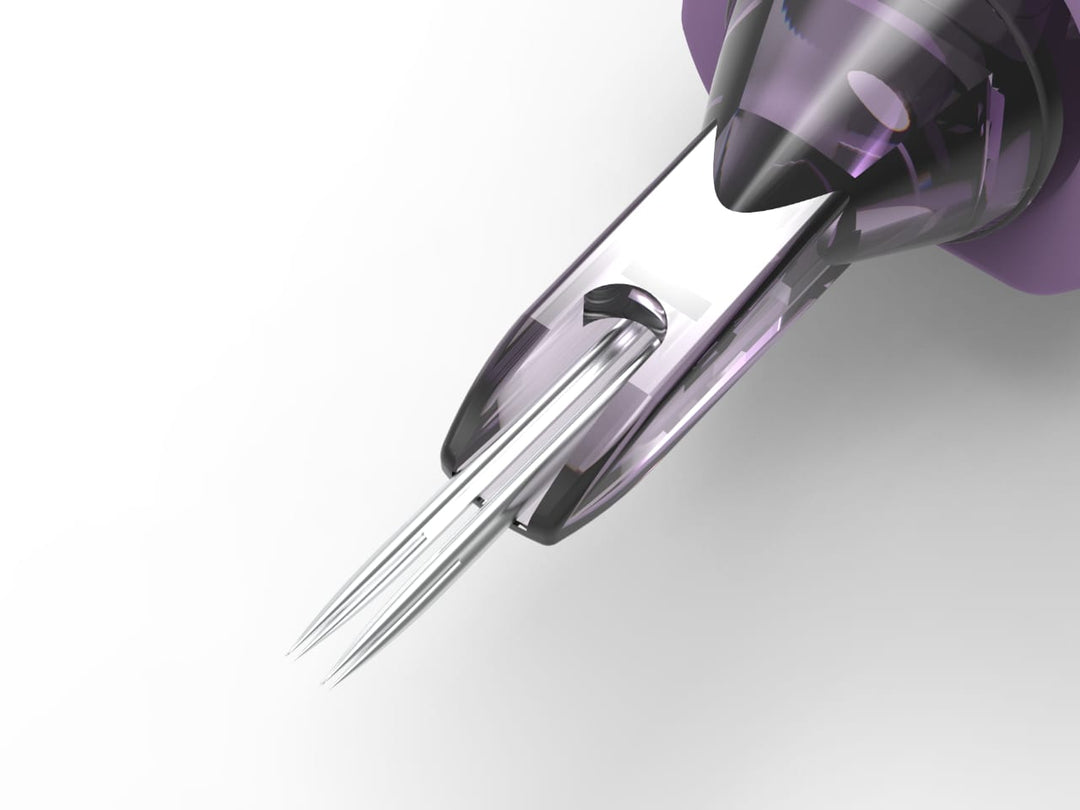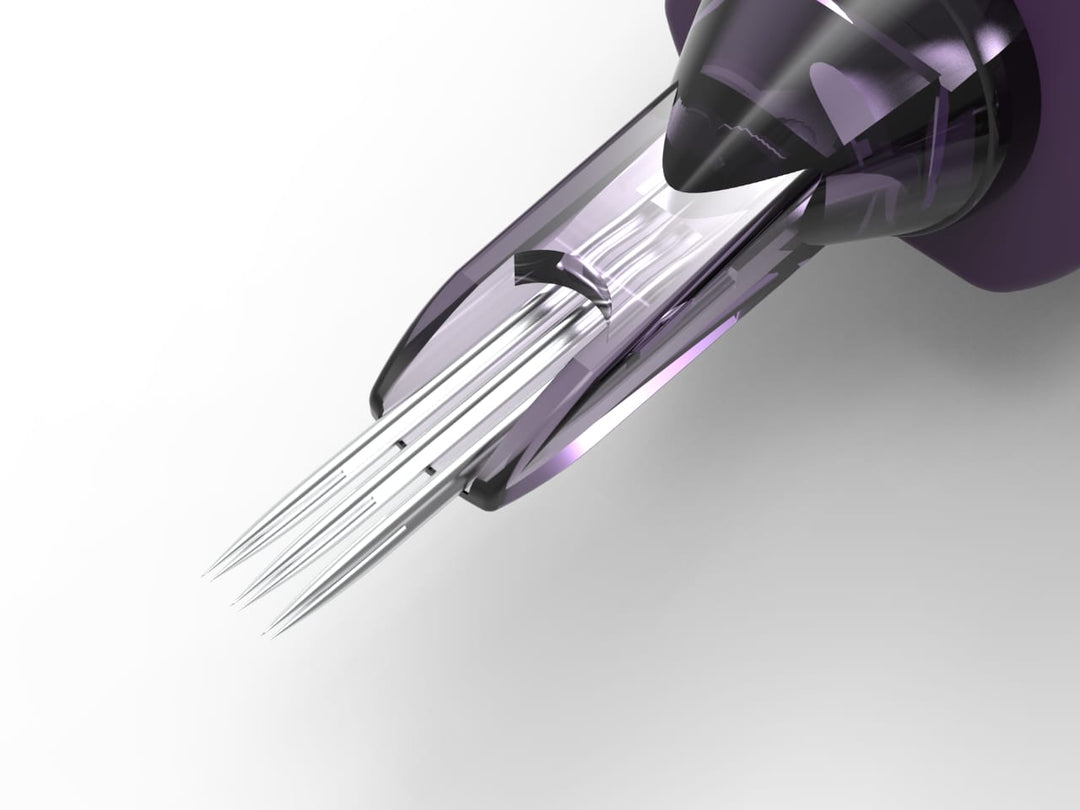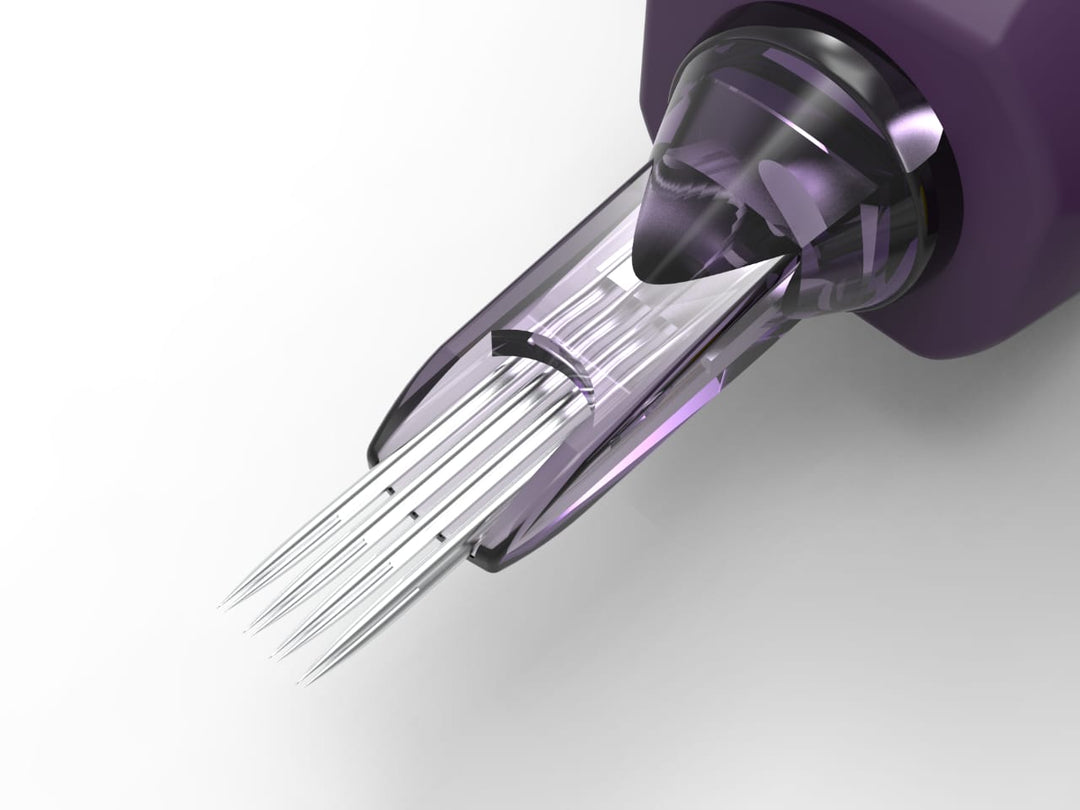The quality of your output depends on a wide variety of factors, including your tattoo machine, tattoo needles, and experience as a tattoo or permanent makeup (PMU) artist. However, a commonly neglected factor is your chosen ink—specifically, how viscous it is. Viscosity refers to a fluid's thickness or ability to flow; higher-viscosity pigments flow more slowly, while lower-viscosity inks are thinner and flow faster.
Viscosity and your output
Differences in ingredients, production processes, and pigment concentrations can result in variations in the viscosity of tattoo and PMU inks. An ink's viscosity affects how it's implanted into the skin, its ideal usage, and, to some degree, its ease of application.
Thicker pigments flow more slowly through the tattoo needle and into the skin. This quality makes them better suited for styles and techniques that require higher levels of precision and control, such as fine line work and shading. Some artists also prefer them for drawing designs with bold, solid, and saturated colors, as seen in tribal and blackwork, among other tattooing styles.
Conversely, low-viscosity pigments are thinner and flow more quickly, so they're often used to draw over larger areas and create bold lines where faster coverage is necessary. Many artists prefer them for styles that use subtle shading and intricate texture work, such as realism and watercolor. As an artist, you should be able to adjust your technique based on your chosen ink's viscosity to achieve your desired effect.
The role of tattoo needle diameter
Besides ink viscosity, the diameter of your tattoo needle can also affect the flow and implantation of your chosen pigment. It pays to carefully balance your pigments with needle diameters, as a mismatch can lead to inconsistent ink flow or inadequate pigment deposition. These issues contribute to subpar outcomes, such as uneven color distribution and patchy areas in the finished tattoo. In some cases, mismatched needle and ink combinations can also cause excessive bleeding and unnecessary discomfort to your client.
Small-diameter tattoo and PMU needles, such as 0.25mm needles, are mostly used for intricate details and delicate shading. It's wise to pair them with lower-viscosity pigments to ensure a smooth flow and minimize the risk of clogging. On the other hand, needles with diameters of 0.35mm or larger are ideal for bold lines and filling larger areas. They can handle more viscous inks, as the increased needle size facilitates better flow and deeper ink penetration.
Ink viscosity in PMU
Viscosity is as crucial in PMU as in traditional body art. Pigments used in PMU are generally formulated to be thinner to ensure easier application and deposition on delicate facial skin. Compared to traditional tattoo inks, which need to be deposited into the skin through a thicker epidermal layer to the dermal layer to ensure longevity, PMU inks are meant for shallower implantation. This is also why PMU procedures often use finer needles. Penetrating too deep into facial skin, which is usually thinner than other body parts, can cause scarring and unsightly results.
Understanding the delicate interplay between ink viscosity, needle diameter, and the specific requirements of the tattoo or PMU procedure is essential for achieving optimal results. As a tattoo or PMU artist, you must be able to adjust your technique and choose the variables appropriate for your style, procedure, and desired effect. Keep your clients satisfied by mastering your craft and choosing the highest-quality tools today!







